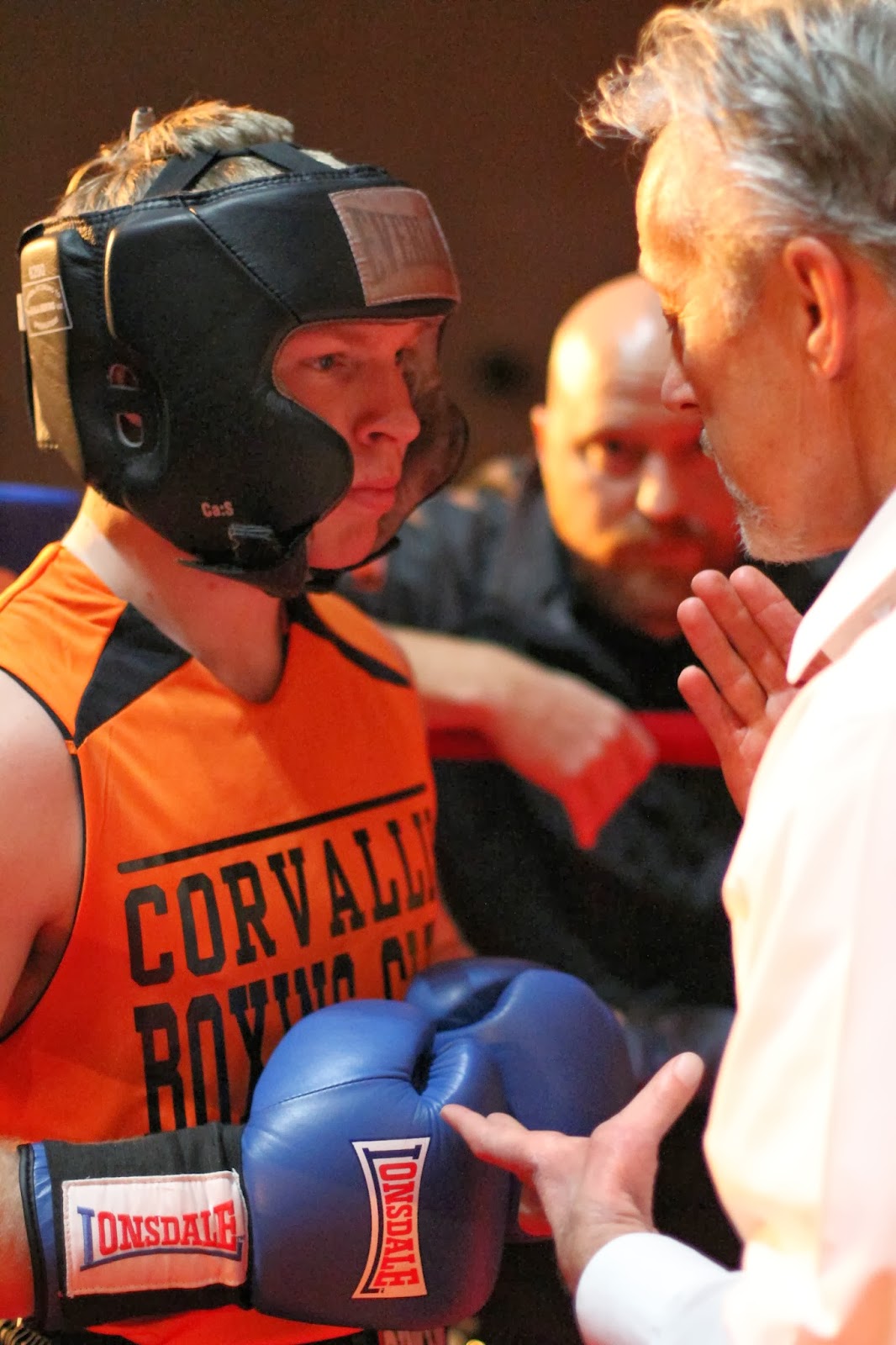Headgear In Boxing
by Ronald Borst
As a child, I boxed a bit. Nothing too serious, but enough to see the merits of the protective headgear that I was required to wear.
But professionals within the ranks of boxing, and some scientific studies, suggest that headgear may not provide all the benefits that are commonly thought. Amateur boxing has had headgear rules for some time, and the benefits seem undeniable. In light of new data, should boxing have headgear rules, or even the headgear itself?
What are the benefits of headgear, both short term and long term? What are the disadvantages? Are there significant risks in not wearing headgear, in regard to boxing? These are questions we should ask of the sport, especially when one considers boxing's recent resurgence in popularity.
According to a recent news article from The Guardian, boxing curriculums in England's high schools increased from 20 to almost 2000 in the short period from 2005 until 2009. Boxing in the United States, and other countries has also increased, and today it is not uncommon for American high schools and colleges, to have their own boxing teams. Even churches have boxing clubs, as witnessed by Corvallis Oregon's, Corvallis Boxing Club, a faith-based boxing team from New Life Christian Church in Corvallis.
Mandatory headgear in boxing began at the 1984 Olympiad in Los Angeles, California, and had been used in amateur boxing exclusively, until recently, when headgear rules were changed to allow amateur male boxers to box without the vision-restricting, protective gear. Youth and women who fight in the amateur ranks, still have to wear the headgear.
The onset of the headgear itself, was a knee-jerk response from the management of the sport, based on criticisms of boxing's effects on health, and boxing's lack of any prevention tactics. The end result of that criticism and response, was the AIBA(International Boxing Association) enacting headgear rules in time for the 1984 Los Angeles Olympics.
And today, boxers are fighting without headgear for the first time since.
Why the sudden shift in ideology concerning the medical purposes of boxing headgear? According to an article by Discovery Channel's online site, DiscoveryTech(discovery.com), Jesse Emspak states of the function of headgear, “Padded headgear and boxing gloves may seem like common-sense equipment for a boxer, now science is backing that up.”
If the “common-sense equipment” is being discarded in the wake of science playing “backup,” what exactly are the facts about headgear, and should headgear be mandatory?
To begin answering these questions, we must first look at the history of boxing and its headgear. It seems a valid point, to state that headgear in boxing is relatively new, and data is incomplete. Ninety years of sanctioned boxing in the United States, took place before any headgear mandate.
To be blunt, boxing has never really addressed its safety issues correctly. And old fighters tend to die old fighters. So, headgear has never been considered a part of the sport. Boxers were expected to duck and dodge punches, and absorb them when getting hit.
The gloves, on the other hand, have been getting technical upgrades throughout the span of boxing matches, and today the gloves are the safest in history. This is one reason why boxing is no longer considered “barbaric.” Boxing has tried to clean up its act. But headgear was never considered during the cleaning up, mostly due to vision restraints produced by the peripherally blocking headgear.
“Boxing safety has improved,” says Tessa Jowell(The Guardian 11-15-09), and now ranks above gymnastics on a sports safety scale.
Now, according to Emspak, a team of scientist from the Cleveland Clinic, have proven the without-a-doubt facts about boxing headgear. The team studied “linear” impacts and “rotational” impacts. Linear impacts are straight on hits, while rotational impacts are the kind that come from angles. These rotational impacts cause the head to spin, and that is different from the head-on impacts(linear).
In the study, it was proven that headgear has little effect on stopping rotational impact damage, but does do much to minimize the effects of linear impacts. Heavier padding was also proven to be effective against the effects of linear impacts. Another statistic of the study, was the headgear's ability to lessen future brain damage, as the study stated, “The effects of getting hit, accumulate faster in fighters who do not wear headgear.”(Discovery Tech News 2-8-12)
This line of thinking, that headgear HAS to be protective, has been a common thread for thirty-five years. And as usual, these opinions have been countered. In recent news, USA Boxing Team Physician, Barry Jordan M. D., tells of the reasons behind the lifting of mandatory headgear, “Boxing has four ways that a fighter can get brain damage, and headgear prevents none of them.”
The four ways to brain injuries are:
- Rotational Acceleration
- Linear Acceleration
- Injury to Carotid Arteries
- Impact Deceleration
These four ways are caused by direct impacts, gloves to head and gloves to neck, as well as head to floor, when a fighter falls and the head impacts with the ring mat. As Jordan stated, the headgear we are accustomed to seeing in boxing, does not prevent brain damage caused by these events.
“At first glance,” Jordan said, “it seems risk of concussion, would rise without boxer's having headgear.”
It does not, however, as “headgear does not stop rotation impacts, the kind that cause concussions,” said Jordan.
But Doctor Jordan, who leads the brain injury program at Burke Rehab Hospital, also said that the presence of headgear “reduces eye trauma, facial lacerations, and nose injuries.
Some trainers and boxing gurus say that the “sweet science” has changed, and those changes are not necessarily good. In Ring Magazine's article “Power Outage,” by Don Stradley, trainer Joe Goosen said, “When I see amateurs now, it's horrendous, it's disturbing.” What Goosen is saying, is that trainers are not teaching the correct skills anymore, and that is more dangerous than not wearing headgear. Goosen, who has trained the best in the world for forty years, pointed to the amateurs of the 1960s and 70s, who fought without headgear and with pro style gloves and professional rules.
There is an emphasis on technique, Goosen says, and in boxing, at the core, that means getting hit less. George Evans, an Albany, Oregon boxer, who now trains amateurs, said that headgear “is a bigger target, resulting in more blows.” Evans, after almost five hundred bouts, said, “I never wore headgear, and I am doing pretty good.”
Some are not doing so good, and boxing has tried to address that, by mandating headgear and also a slew of other rules and focus points, aimed at protecting fighters.
In Doug Ward's report(Title Boxing, 5-8-13) , the “safety” of boxing was documented, and boxing ranked high against other sports. Even though Title Boxing may seem to be on the surface, biased, that is simply not true. They are of course, invested in boxing, but to ignore the legitimacy of boxing by offering fallacies, is not their cup of tea. The company staff are interested in making their sport the best it can be, and that means self-examining and correcting, if needed. Title just doesn't make boxing gear, Title wants to make boxing.
Title's safety report claims boxing is safer than most sports, and pointed to the National Safety Council's(NSC) annual report on sports injuries, and accompanying statistics. Not only did Ward find less injuries amongst boxing athletes, but boxing had less injuries than many NON-contact sports. Boxing had less rate of injury, than cheerleading, according to the NSC.
Ward went on to document boxing's safety focus, saying that referees are better trained, and that coaches, doctors, and referees, are all present during bouts, and more importantly, “all are monitoring the fighters.”
In retrospect, we know that boxing is dangerous. And we know that it does cause brain injury. Even though we can conclude that headgear does not prevent concussions and even brain damage, we can also conclude that there are enough benefits of the head protection, that it should be worn by all amateur fighters.
Pros Vs. Cons:
| Headgear Pros | Headgear Cons |
| Facial Protection(lacerations, etc.) | Accelerated Brain Injury Symptoms |
| Linear Impact Protection | No Protection From Concussion |
| Less Severe Long Term Brain Damage | Uncomfortable |
| Longer Quality Of Life Span | Restricts Vision |
When we weigh the negative aspects of protective headgear in boxing, I believe we can conclude that wearing headgear is more beneficial than not wearing the padded headgear. Even when we consider that headgear does little to protect against concussion, we can still come to the conclusion that the protections against linear trauma, and the fact wearing headgear results in less occurrences of future brain damage, is enough on its own, to warrant wearing headgear when boxing.
I believe, that if one wears gloves in the garden, to protect against thorns, then it is indeed common sense to believe also, that wearing headgear to prevent facial cuts and to lessen the severity of future brain function, is indeed common sense.

Photos by Ronald Borst
Corvallis Boxing Club's "Fight Night 2014" Canon 7D and EF 50mm f1.4 USM
Email rborstfishon@gmail.com for,
photo re-use permissions,
text re-use,
and other business.
Attribution:
Clinical Neurology News, “Headgear Comes Off” by Barry Jordan M.D., July 2013
Ring Magazine, “Power Outage” by Don Stradley, March 2012
Discovery Tech News, discovery.com, “Headgear Protects Boxers' Brains, Mostly” by Jesse Emspak, Dec 2008
The Guardian, “Off the Ropes,” by Matthew Taylor and Owen Gibson, November 2009
Title Boxing, “Is Boxing Safe?” by Doug Ward, May 8, 2013
Interview with former boxer and current trainer, George Evans, January 2014




No comments:
Post a Comment